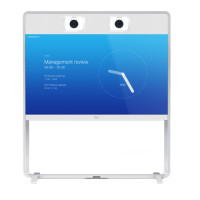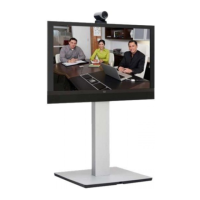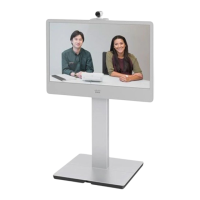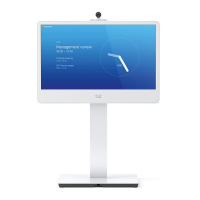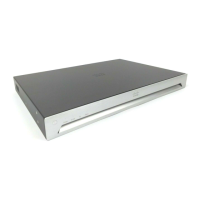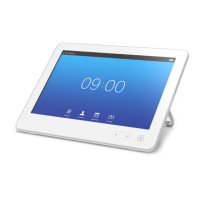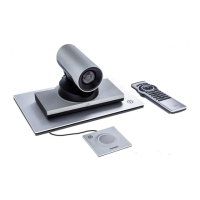D15335.02 Cisco TelePresence MX700 and MX800 API Reference Guide CE8.0, FEBRUARY 2016.
Copyright © 2016 Cisco Systems, Inc. All rights reserved. 139
Cisco TelePresence MX700 and MX800
API Reference Guide
xStatus Call [n] CallType
Shows the call type of the incoming or outgoing call. You can run the command xStatus Call to
find the call identity.
Value space of the result returned:
Video/Audio/AudioCanEscalate/ForwardAllCall/Unknown
Example:
xStatus Call 27 CallType
*s Call 27 CallType: Video
** end
xStatus Call [n] DeviceType
Indicates whether the remote system is a single endpoint or an MCU. Some Cisco endpoints
(SX20, SX80, MX200 G2, MX300 G2) have built-in MCU capabilities.
Value space of the result returned:
Endpoint/MCU
Example:
xStatus Call DeviceType
*s Call 4 DeviceType: Endpoint
** end
xStatus Call [n] Direction
States the direction of the call initiation. You can run the command xStatus Call to find the call
identity.
Value space of the result returned:
Incoming/Outgoing
Example:
xStatus Call 27 Direction
*s Call 27 Direction: Outgoing
** end
xStatus Call [n] DisplayName
Shows the name of the remote (far end) participant in an incoming or outgoing call. You can run
the command xStatus Call to find the call identity.
Value space of the result returned:
String
Example:
xStatus Call 27 DisplayName
*s Call 27 DisplayName: "firstname.lastname@company.com"
** end
xStatus Call [n] Duration
Shows the duration of a call (in seconds). You can run the command xStatus Call to find the call
identity.
Value space of the result returned:
Integer
Example:
xStatus Call 27 Duration
*s Call 27 Duration: 2354
** end
xStatus Call [n] Encryption Type
Shows the encryption type of the call. You can run the command xStatus Call to find the call
identity.
Value space of the result returned:
N o n e /A e s-128
Example:
xStatus Call 27 Encryption Type
*s Call 27 Encryption Type: "None"
** end

